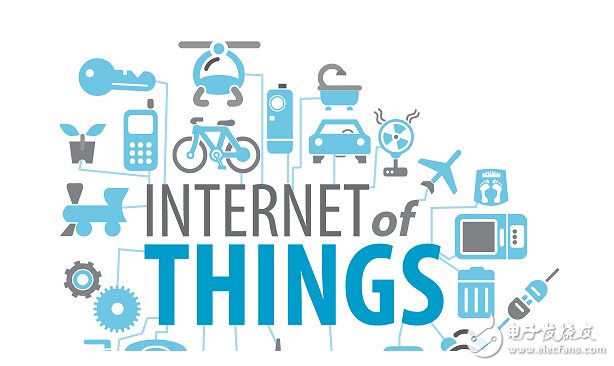Needless to say, I know that the Internet of Things is booming. Apple's smart home application HomeKit, Xiaomi's main push "smart module + control center + cloud service", the beauty of holding millet thighs, everyone is scrambling to connect electronic products, furniture, and even cars, but also let them all Connect to the Internet.

McKinsey pointed out that the Internet of Things will generate 4 trillion to 11 trillion US dollars of economic benefits in 2025. This huge pie is also the driving force for everyone. But at the same time, McKinsey also pointed out the hurdle to achieve this pie must be, the most critical is open source code, unlock industry specifications.
How to draw 11 trillion pies?
"Not all industries are born equal" is the Internet of Things. In the report, McKinsey intimately pointed out which areas would be the best interests of the big pie of the Internet of Things.
Everyone is thinking about the concept of hot home, but in fact, the most benefits may be manufacturing, urban planning, medical, retail and other traditional industries.

These findings are strikingly similar to McKinsey's previous report on the impact of big data on various industries.

In the era of big data, especially the biggest opportunities in the era of IoT data, will not be born in Silicon Valley. These opportunities to change the world will be hidden in places that look less expensive, such as in crop fields, factory buildings and the like.
The lower the technology, the low-key industry, the greater the potential that the Internet of Things will bring to it.
More than 400 sets of standards are not compatible, when will the Internet of Things era come?
Unfortunately, there are still eighty-one difficulties between us and the bright future of data development. For example, there are more than 400 sets of incompatible operating standards, and the network signals in the developing regions are not covered.
McKinsey pointed out that the standard of incompatibility is the biggest roadblock for the Internet of Things, which leads to the inability to communicate between systems and devices.
McKinsey also offers two possible solutions: First, using open source operating standards. Second, develop and embed bridge functions to connect different systems.
Most of the existing 400 incompatible operating standards are controlled by major vendors, and open source can change this. After open source, programmers will be concerned with code compatibility and no longer vendor compatibility.
Store large amounts of data without exploitation, and no X
There is a common problem in the entire big data industry. The Internet of Things is no exception. That is, most of the data collected by companies stop at providing information, and cannot be used as a starting point for upgrading technology and completely exploiting the value of utilization.
McKinsey estimates that only 1% of the data can be translated into real action, often the program only uses sensor data to monitor system anomalies, rather than optimizing and upgrading the technology.
The following conclusions may lead to the conviction that the Internet of Things started with Apple Watch and ended up with Apple Watch: 70% of the economic benefits of the entire Internet of Things will be captured by B2B scenarios, not B2C, in other words, the Internet of Things produces the largest The economic benefits are not those wearable devices that are frightening and cautious. Optimizing the benefits of a networked irrigation system will be more than developing smart fitness.
Common standards can support cross-domain attempts and expand market capacity, while using data from a macro, strategic level can increase data efficiency. But if there is no one to preempt, we have to wait for Silicon Valley's Apple, Google, LinkedIn, Facebook and other Silicon Valley FLAG companies to change the world.
Layout of the Internet of Things, Apple Google who is the winner?
It is recognized in the industry that among the two technology giants, Google has relatively seized the opportunity of capitalization of the Internet of Things.
While Apple is still relying on traditional advantages to lure consumers with novelty products, Google is trying to build the Internet of Things system Brillo and the communication protocol Weave, and to reach out to new areas such as industrial applications, connected agriculture and remote infrastructure.
With Google's layout, you may not need to wait until the open source standard source code, relying directly on Google to establish a unified command program. The huge and enticing $11 trillion market is enough for players in the market to vote with their feet, keep up with Google, and react quickly to market movements.
However, no matter what the results of Google's attempts, the real winners are not them, but us – ordinary consumers. McKinsey predicts that 90% of the value of the 11 trillion big cake of the Internet of Things will eventually flow to consumers rather than suppliers, although the remaining 10% is enough to make the main players in the market rush. It is.
But the important thing is to echo the first and the last - don't be too happy, the future of this interconnected thing is still unknown.
There are two solutions of our flood light, including Build in driver and Driver on board. Build in driver can be divided into splicing type, with acrylic lens and without acrylic lens, tempered glass front cover and PC front cover. We are the manufacturer of producing energy saving and waterproof project lamps. There are three color temperatures with cool white, warm white and natural white of flood flights. Our LED Flood Light is the best choice for park, parking lot, garden, building, billboard, park, outdoor basketball court, airport lighting and sports hall etc.
LED Flood Light
Led Security Light,Outdoor Flood Lights,Led Floodlight,High Powered Flood Lights
Jiangmen Lika Lighting Electrical Appliances Co., Ltd , https://www.lika-led.com